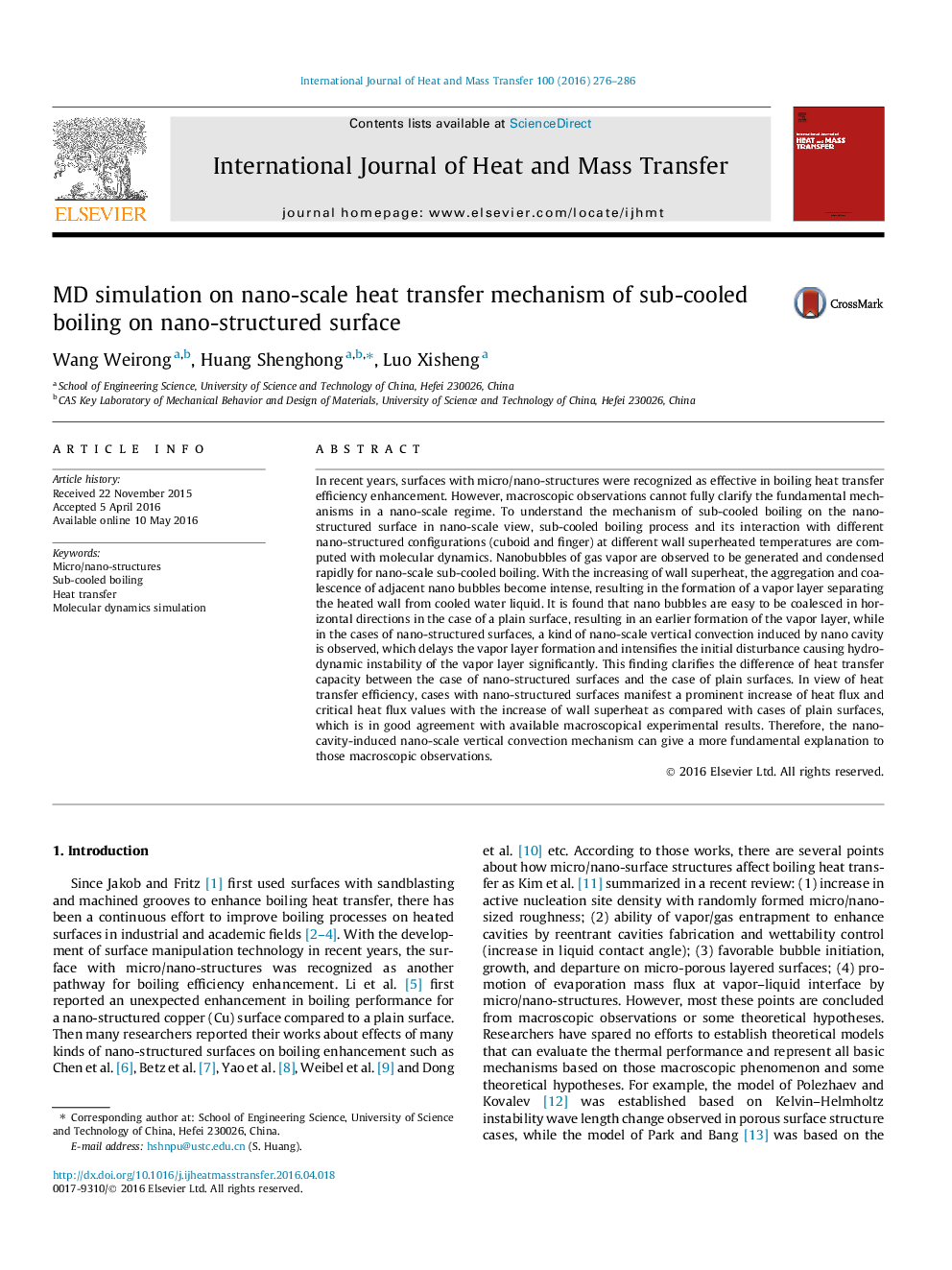| کد مقاله | کد نشریه | سال انتشار | مقاله انگلیسی | نسخه تمام متن |
|---|---|---|---|---|
| 656358 | 1458042 | 2016 | 11 صفحه PDF | دانلود رایگان |
• The sub-processes of nucleate boiling on nano structures are observed with MD.
• Nano-scale vertical convection reveals the heat transfer mechanism on nano-structured surfaces.
• The results based on MD bridges macroscopic observations with microscopic processes.
In recent years, surfaces with micro/nano-structures were recognized as effective in boiling heat transfer efficiency enhancement. However, macroscopic observations cannot fully clarify the fundamental mechanisms in a nano-scale regime. To understand the mechanism of sub-cooled boiling on the nano-structured surface in nano-scale view, sub-cooled boiling process and its interaction with different nano-structured configurations (cuboid and finger) at different wall superheated temperatures are computed with molecular dynamics. Nanobubbles of gas vapor are observed to be generated and condensed rapidly for nano-scale sub-cooled boiling. With the increasing of wall superheat, the aggregation and coalescence of adjacent nano bubbles become intense, resulting in the formation of a vapor layer separating the heated wall from cooled water liquid. It is found that nano bubbles are easy to be coalesced in horizontal directions in the case of a plain surface, resulting in an earlier formation of the vapor layer, while in the cases of nano-structured surfaces, a kind of nano-scale vertical convection induced by nano cavity is observed, which delays the vapor layer formation and intensifies the initial disturbance causing hydrodynamic instability of the vapor layer significantly. This finding clarifies the difference of heat transfer capacity between the case of nano-structured surfaces and the case of plain surfaces. In view of heat transfer efficiency, cases with nano-structured surfaces manifest a prominent increase of heat flux and critical heat flux values with the increase of wall superheat as compared with cases of plain surfaces, which is in good agreement with available macroscopical experimental results. Therefore, the nano-cavity-induced nano-scale vertical convection mechanism can give a more fundamental explanation to those macroscopic observations.
Journal: International Journal of Heat and Mass Transfer - Volume 100, September 2016, Pages 276–286
